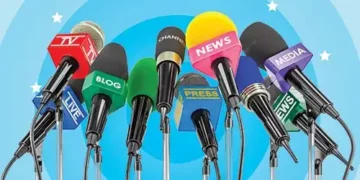Blitz Bureau
NEW DELHI: US President Donald Trump made his maiden visit to Asia last month, attending the ASEAN summit in Malaysia, followed by bilateral visits to Japan and South Korea for the APEC summit. The visit came at a crucial time, when many were questioning the Trump administration’s commitment to its Asian allies and partners. As the trip ended on a positive note for the allies, it left some lessons that may help partners like India, which want to strike a deal with the US.
The initial US response towards Indo-Pacific allies and partners was quite similar, with no distinction between the two. However, after protracted renegotiations and increased pressure from China, US negotiators reached a deal. The agreement, concluded on the terms of the US, was a win-win deal for both sides.
The US secured economic and security deals from allies, and in reciprocity, the allies received the US commitment to their alliance. This agreement can be attributed to three primary factors. First, the allies’ contribution to the US manufacturing revival; second, enhancing the US’s mineral security; and third, deepening defence cooperation to strengthen the regional security architecture.
On all these parameters, the allies, including Japan, Korea, and Australia, have demonstrated their strategic importance to the US. Simultaneously, they have reaffirmed their commitment to the US’s integrated deterrence. On global trade US relations with its allies have improved since the initial setback. Though these do not enjoy the status they once had, it cannot be ignored that they have successfully brokered a deal for themselves. India can also adopt a similar approach, but it must do so from a different vantage point, considering the limitations of strategic autonomy and its national interests. There are three lessons India can take from the US in dealing with its allies and partners.
There are three lessons India can take from the US in dealing with its allies and partners
First, do not expect preferential treatment comparable to that of US allies, given the structural realities and the legacy of economic and security ties. Secondly, US partners can be exempted from scrutiny if they have something substantial to offer, either the market, money, or minerals. However, the third vital lesson is that to secure a deal, a comprehensive agreement is the best way to go. India can benefit from these observations on how allies and partners have dealt with the US. One of them is to use negotiations to strike a deal that extends beyond the economic domain. The Trump administration has been more than open to sealing a comprehensive deal beyond the trade agreement. India should adopt this approach to secure a better deal for itself. For instance, Korea was able to use the opportunity to secure the US support for developing its nuclear submarine programme, in return for its massive investment in the US economy. India can leverage this opportunity to secure a comprehensive deal with improved technology agreements and enhanced energy security. In return, India can also attract reciprocal investments in its mining and nuclear energy sectors.
This would not only end the ongoing uncertainty in India-US ties, but also further boost US investments in India, including those from Korea and Japan, which are eagerly awaiting stability in the relations. India should utilise the chance to its potential, optimising the maximum it can get from the US, without compromising its strategic ties with other countries.
































